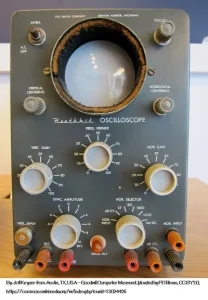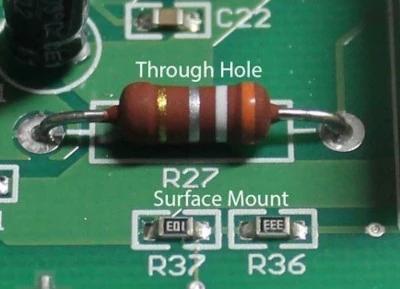Heathkit produced a range of kits that included amateur radio transmitters, receivers, amplifiers and station monitoring and test gear. Other products in the range of kits were TV sets, household appliances, electronic test instruments and, near the end, some early computers.
Heathkit The Beginnings
 Heathkit began life as an airplane company back in 1911. The first kit was an aeroplane, the Heath Parasol. Heathkit produced their first electronic kit in 1947, the Heathkit O1 oscilloscope.
Heathkit began life as an airplane company back in 1911. The first kit was an aeroplane, the Heath Parasol. Heathkit produced their first electronic kit in 1947, the Heathkit O1 oscilloscope.
The first kit aimed specifically for the radio amatuer was in 1954 with the AT-1, which was a simple, three tube, crystal controlled transmitter. The AT-1 could operate in CW mode on the six most popular amateur shortwave bands.
The amateur radio range eventually included hf transmitters and receivers, transceivers, test gear and a range of vacuum tube legal limit HF amplifiers. These amplifiers proved to be Heathkit’s most popular products and that which the most hams were familiar with.
Today there are still many Heathkit RF power amplifiers in daily use with radio amateurs throughout the world. Their longevity is testament to the quality of Heath products in those years.
Game Changing Heathkit Assembly Instructions
A large part of the success of the kits was the assembly instruction manual. A person with very little experience with electronics could successfully build a working Heathkit. In fact the only real skill needed to start with was the ability to solder properly. And to follow instructions, of course.
Other kit makers instruction manuals never approached the level of professionalism of the Heath Company’s manuals. I personally have built Heathkits and other kits from various manufacturers. I can remember spending hours and hours on some kits looking for why the darn thing doesn’t work. Heathkits made the whole process simple and enjoyable.
The image below shows the step by step process used in the manual

Big Cost Savings
Building your own piece of Heathkit equipment saved a lot of money on manufacturing costs. A self-build Heathkit HW-101 HF transceiver cost only $399.95 while the more up to date SB-104 HF transceiver kit cost $669.95 in 1978.
A broadly similar “cheaper than American made” Japanese product, the Yaesu FT101E cost $799.00 the same year. Consider also the Yaesu FT-101E still retained the original mechanical tuning dial, while the SB-104 had a digital tuning display.

Effective Testing and Fault Finding Instructions
Having repaired a number of Heathkits over the years the ease of fault finding when having a manual available was a refreshing change. Many commercial radio equipment workshop manual authors could benefit from seeing how effectively Heath did it.
Heathkit Today
 The brand was revived in 2019. Considering the changes in electronic technology this was a brave decision. Components have shrunk from pigtailed parts to tiny SMD devices. The photo of a through hole resistor on a board along with SMD resistors illustrates this well.
The brand was revived in 2019. Considering the changes in electronic technology this was a brave decision. Components have shrunk from pigtailed parts to tiny SMD devices. The photo of a through hole resistor on a board along with SMD resistors illustrates this well.
With the relaunch the company now makes kits focussed on electronics education.
Modern electronics components are tiny and one needs suitable tools. At the least you need a decent quality temperature controlled soldering station. A good magnifying light combination is another essential.
Perhaps wisely, Heath decided to keep SMD parts to a bare minimum, and then use only the larger types.
Small Range And High Prices
The modern range of kits is still small, featuring a few TRF AM radios and some other bits and pieces. Some of the products seem a bit strange e.g. the TRF AM receiver. Apart from the learning potential of the kit, I can’t see an AM TRF receiver being in much demand today. Definitely not at the asking price of $149.00. It would be possible to build a TRF receiver using available parts and even salvaged parts like MW inductors for a lot less. Probably for a lot less than $40.00
Another odd product is the VHF Pipetenna also costing $149.00. For what is basically a few pieces of PVC pipe and a bits of cable and metal. The antenna is described as a “modified folded dipole with common mode choke. At heart it’s probably a slim jim or double bazooka design. Also, a choke is not really the best matching option as it can introduce losses. So while it’s a good idea, I would say it’s appeal is limited.
Yes, it’s early days for Heath. We’ll have to wait to see what the future range will look like, and how the products sell at the asking prices. Personally, I think Heathkit will need to think deeply about their target market. If, as they state, they intend their kits to be learning tools then the potential is limited. Few students have that kind of money available to buy what, so far, appear to be very simple kits.


